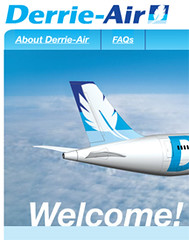"We are considering having something similar to a rally where parents and children can bring CDs and video games that they consider are destructive to the mind set of our youth and have a burning, just like they had a gun buyback last year.” — Pastor Richard Patrick
Blogcampaigning summed up their take on a potential anti-music/anti-game rally as something that they thought only happens on the Simpsons, which is pretty amusing since the Simpsons would likely land in the fire. Otherwise, it happens all the time.
What makes this Newport story interesting is the amount of attention it has received. Slashdot even pointed to some studies that suggest what is on the burn list might not be to blame.
One study concluded that “there were actually higher levels of relaxation before and after playing the game [World of Warcraft] as opposed to experiencing anger, but this very much depended on personality type.”
The latter is true. You never know what people are going to do when exposed to any material. For example, four years ago, a 19-year-old poured grease on her boyfriend’s face during an argument about a Bible verse. The Bible, of course, had nothing to do with the decision.
So while the pastor might be right in that some youth emulate the material they are exposed to, encouraging “burnings” seems to be a same path alternative. After all, it’s one thing to teach youth and parents how to make positive life choices, but it’s another to encourage the destruction of everything disagreeable.

Blogcampaigning summed up their take on a potential anti-music/anti-game rally as something that they thought only happens on the Simpsons, which is pretty amusing since the Simpsons would likely land in the fire. Otherwise, it happens all the time.
What makes this Newport story interesting is the amount of attention it has received. Slashdot even pointed to some studies that suggest what is on the burn list might not be to blame.
One study concluded that “there were actually higher levels of relaxation before and after playing the game [World of Warcraft] as opposed to experiencing anger, but this very much depended on personality type.”
The latter is true. You never know what people are going to do when exposed to any material. For example, four years ago, a 19-year-old poured grease on her boyfriend’s face during an argument about a Bible verse. The Bible, of course, had nothing to do with the decision.
So while the pastor might be right in that some youth emulate the material they are exposed to, encouraging “burnings” seems to be a same path alternative. After all, it’s one thing to teach youth and parents how to make positive life choices, but it’s another to encourage the destruction of everything disagreeable.



















